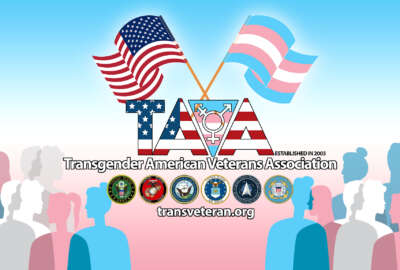Transgender federal employees want more training, communication around gender inclusion
OPM's guidance on gender inclusion is improving the lives of transgender federal employees, but those employees say more training and communication is needed.
One year after the Office of Personnel Management released its gender identity and inclusion guidance on Transgender Day of Visibility, transgender federal employees expressed gratitude for the guidance, but also frustration around a lack of communication and training regarding both protections and processes.
They appreciate the protections and the clarity put forth in the guidance; it’s far more than existed before. But they also said agencies could do more to communicate about the guidance at both the managerial and employee levels, and provide training for managers to handle the technical and legal details facing transgender federal employees.
Two transgender federal employees who have come out since OPM released its guidance, speaking to Federal News Network anonymously out of concern over potential retaliation, said the lack of details about important aspects of transitioning such as changing their names and pronouns, and what protections were in place regarding their transitions remains a significant hole in the implementation of the guidance. Neither had seen or knew about OPM’s guidance; one said their agency provided training on sexual identity and gender inclusion when they were hired, but that guidance primarily focused on educating cisgender and heterosexual employees about LGBTQ+ issues.
No clear transition process
“I went and pulled out that PowerPoint, and I just looked through it for like, ‘ok, what do I need to do?’ And there wasn’t a whole lot of instruction,” one person said. “There was a part about ‘hey, if you’re transgender, here are your protections.’ But there wasn’t ‘this is what you should do if you’re about to come out.’ So I went to my supervisor and I just said, ‘hey, I just want you to know, moving forward, I’m transgender.’ And I don’t think he had a whole lot of experience, because he said, ‘oh, okay, cool.’ He didn’t ask for pronouns or preferred name or anything.”
That employee changed their icon and pronouns in Teams, but that was all they were able to do themselves. They’ve been using their name and pronouns, presenting as their gender and using the appropriate restroom ever since, and there have been no issues with their team. But they’ve existed in a kind of limbo regarding official procedures ever since, waiting on instructions — no one told them they needed to contact HR and IT. They said it’s been difficult dealing with seeing their deadname — the name they used before they transitioned — in the computer system every day since.
“I feel like my manager … I don’t think he had the proper training of, ‘hey, if somebody comes out, this is the procedure.’ Because still, I don’t know,” they said. “I think that’s been the biggest thing, is being like ‘I don’t think I did this right.’ Like I’m living [and] presenting as [my gender]. And I changed my pronouns in Teams. I changed my icon. And that’s it.”
The other transgender federal employee did go to HR, but found human resources managers and employees had received little-to-no training specifically on dealing with transgender federal employees. The only training they’d received was on the name change process, which OPM’s guidance essentially boils down to “name changes related to gender identity are handled in the same way as any other legal name change.” The agency also hadn’t updated its harassment training, the employee said. Training around non-harassment policies at their agency is the same as it was prior to OPM’s guidance.
OPM said that its Office of Diversity, Equity, Inclusion and Accessibility “has heard from individual transgender and nonbinary employees that this updated guidance is an important resource to point to as they work on improvements regarding gender inclusion in their own agencies, including on correct name and pronoun use, the ability to display used names and pronouns in email addresses and employee profiles, and transition support.”
Anxieties over bathrooms
But for this employee, the biggest concern was bathrooms in their office building. OPM’s guidance says “agencies should allow access to common and single-user restrooms and other facilities corresponding to an employee’s gender identity. Agencies should not condition this access on an employee having undergone or providing proof of any gender affirming surgeries or other medical procedures.” But being unaware of this guidance, this employee had been living in a state of anxiety over which restroom to use for the past several months.
“There are no gender-neutral bathrooms. So I’ve had to go with the one assigned at birth, just for safety in terms of not having to deal with anything going on my record of potential inappropriate workplace behavior of using the one I’m transitioning to using,” they said. “I’ve been kind of just hiding up on the top floor in … a stall, and if someone comes in, I just don’t come out until after they’ve left.”
The fears expressed by these transgender federal employees aren’t baseless. Restroom usage is often a point of concern with transgender people. The 2015 U.S. Transgender Survey, conducted by the National Center for Transgender Equality, found that in the previous year, 59% of respondents had avoided using a public restroom for fear of confrontations, 32% limited the amount they ate or drank to avoid using public restrooms, and 8% developed a urinary tract infection or kidney-related issue due to avoiding public restrooms.
The center performed another survey in 2022, but hasn’t released the full results yet. But the early insights report, which offers some highlights, states that 4% of respondents were denied access to restrooms in a public place, workplace or school in the previous year, and 6% “had been verbally harassed, physically attacked, or experienced unwanted sexual contact when accessing or using a restroom.” These lower numbers may be an early indication that the situation for transgender people is improving; however, recent rises in anti-transgender and anti-LGBTQ+ legislation indicate otherwise, and serve to compound the fears revealed in and informed by the 2015 data.
Gender-neutral restrooms
OPM’s guidance states that “agencies should also explore opportunities to expand the availability of all-gender restrooms and facilities in federally owned and leased workplaces in coordination with the landholding agency with jurisdiction over the facility.” But with the age of most federal buildings, gender-neutral bathrooms tend to be the exception rather than the rule.
And agencies haven’t always been quick to commit to this: Last year, gender-neutral bathrooms were one of the sticking points in the American Federation of Government Employees’ contract negotiations with the Environmental Protection Agency. AFGE wanted EPA to commit, in the contract, to installing gender-neutral bathrooms in EPA facilities during any new construction projects.
“When they move into a new space, they could plan for a gender-neutral bathroom. We weren’t asking for any immediate big construction program,” Joyce Howell, executive vice president of AFGE Council 238, told Federal News Network at the time.
Avoiding stigma
But that’s not a ubiquitous experience. And neither are gender-neutral bathrooms a panacea. Joanne Woytek, program director for NASA SEWP, transitioned back in the 1990s. She said NASA built the agency’s first gender-neutral bathroom for her when she came out, but that it was also stigmatizing.
“You have to be careful in not making it a separation place. It has to be accommodating,” she said in an interview with Federal News Network. “You’ve got to have that gender-neutral bathroom and I’d rather have it be called ‘family.’ I prefer the ‘family restroom’ statement than the ‘gender-neutral.’ We’re all family. It’s a safe place for somebody to go do their business without worrying.”
She pointed out, for example, gender-neutral bathrooms can also be a safe place for nursing mothers to pump. That’s another reason, when her program shifted to a new facility, she pushed to have gender-neutral bathrooms installed.
OPM’s guidance does acknowledge the potential issue of stigmatization around gender-neutral bathrooms: “Agencies should not restrict any employee to a single-user facility instead of common facilities; agencies can, however, make a single-user facility available to all employees who might choose to use it.”
A big step forward
Woytek said she wishes OPM’s guidance had been in place when she came out. Back then it was uncharted territory. While NASA was very accepting even then, she said, there was a little pushback, though never from supervisors. But there were no legal protections, no workgroups on diversity, equity, inclusion and accessibility, and in general, no support.
In fact, back then, Woytek said there was an unwritten rule in the transgender community that you didn’t transition on the job; you found a new job and transitioned there. But Woytek bucked that convention, which she called one of the biggest decisions she made early in her transition. When she told her boss and the legal folks at Goddard Space Center, they were accepting, but cautioned her.
“They said, ‘well, good for you. You know you have no support. And if somebody decides they don’t like you and they want to fire you, they can just do that.’ That was the advice. Because back then there were no legal precedents and no legal footing for what I was doing to not be used as a cause to fire me,” she said. “Now, it wasn’t that they were going to fire me, but they could. So that meant I had to approach it in that manner and understand that there was no infrastructure.”
The future of gender inclusion in federal workplaces
One thing Woytek said could be more clear about the guidance: What happens when this guidance conflicts with state laws? Four states currently ban transgender people from using the bathrooms consistent with their gender identity in some or all government-owned buildings, two make it a criminal offense, and another five have other laws or policies that could affect transgender people’s access to bathrooms. In these states, transgender federal employees could be even more conflicted and frightened.
That’s one reason Woytek worries about the future of the guidance. A new administration could reverse or rescind this guidance. There’s precedent: In 2017, the Trump administration removed any mention of LGBTQ+ people or issues from the State Department’s website, and in 2020, it overturned Obama-era non-discrimination protections for LGBTQ+ people in health care.
“I’ve had a successful career. So why does that have to affect it?” she said. “That’s what this memo is saying: Let’s treat everybody the same. And it’s happy for me to see that. I just hope it is something that does not get affected by other issues going on out there in the world, and it actually gets more firm in its place in the government.”
Woytek said she does see a lot of momentum around DEIA and employee resource groups in determining how best to implement this guidance. The guidance itself merely provides a basis for action, she said; a top-down directive will never be enough to change everything. It will take these various employee-led groups, with continued support from agencies, figuring out how to work together and move forward to really cement that culture change.
OPM said it “looks forward to continuing to work with and support agencies as they engage in the important work of making their workplaces more gender inclusive.”
“What I am seeing in the past six months or so is a lot of engagement among various groups within the whole community of ERGs … I think there is a lot of momentum within the federal agencies,” Woytek said. “I think overall there are still things to be learned, moves to be made, but that is part of life in government and industry. You are not going to solve anything with the directive from one group or another, but I feel good about what I have seen in that regard.”
Copyright © 2025 Federal News Network. All rights reserved. This website is not intended for users located within the European Economic Area.
Daisy Thornton is Federal News Network’s digital managing editor. In addition to her editing responsibilities, she covers federal management, workforce and technology issues. She is also the commentary editor; email her your letters to the editor and pitches for contributed bylines.
Follow @dthorntonWFED






